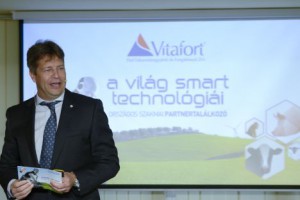What’s inside the Japanese compound feed industry

Not many people call the Japanese feed market ‘attractive’, possibly due to it being an isolated market, or that there are significant industry developments in other neighbouring Asian countries, maybe even down to the strict quality and safety regulations.
Even speaking modestly, Japan is still the world’s 5th largest compound feed producing country behind China, USA, Brazil and Mexico, and its volume is notably higher than that of any single European country. With an annual production volume of around 24.5 million tonnes in recent years, the Japanese feed market, during the last two decades has witnessed a slight decline, following the trend of number of livestock animals. The outlook in the years ahead is expected to remain unchanged. The compound feed tonnage by animal species is split as follows: 26% layers, 16% broilers, 25% swine, 19% beef cattle, and 14% dairy cattle.
The Japanese feed industry cannot live without foreign grain growers and traders. Nearly three-quarters of feed ingredients in Japan are currently imported. The Ministry of Agriculture aims to lift the self-sufficiency rate of overall feed ingredients to 38% in 2020 from an estimated 26% in FY2011 (fiscal year starting in April 2011 and ending in March 2012). Most bulks to Japanese ports are shipped from USA and Australia, and to a lesser extent also from Canada and Argentina. Seeing the fact that 45% of compound feed ingredients in FY2011 was corn (Figure 1), and that Japan produces almost no corn for feed use of its own, this commodity accounts for a majority of imported feed ingredients. Last year the ratio of corn in animal feed production had fallen to a 20-year low due to surging corn prices in the USA backed by the demand for corn ethanol. Japan the world’s biggest corn buyer – has also been reducing the dependence on US corn, seeking to secure sources from Brazil and Argentina. Instead, the ratio of wheat volume in feed has increased to cover the corn shortage. It was a good alternative to corn, and the agriculture ministry succeeded in increasing the wheat import tonnage to the highest level in 15 years. Yet the recent outlook given by the industry officials indicates a possible revival of Japanese corn import from the USA, stimulated by favourite currency exchange rates and certainly seeing the preference for established reliable supply and quality that Japan can expect from US suppliers.
Driven by the target to improve the self-sufficiency ratio of feed ingredients, there have been initiatives and efforts to use feed-grade rice in livestock feed. Rice whole crop silage has almost the same cultivation system as normal rice, no replant failure, contains good nutritional value and cows show high palatability, furthermore long-term storage is possible. Planting of rice for whole crop silage has been increased progressively by the ministry during the last five years, supporting farms with know-how, distribution network and agricultural machinery. Besides, residues of consumer foods available for recycling which are called ‘Eco-feed’ are also actively promoted in the use of feed. The volume growth during the last 10 years is significant and is expected to continue increasing, supported by structural plans. It has a specialised process chain to approve the safety and quality before the eco-feed is delivered to livestock farms. Furthermore, as consumers can also see the label on the animal protein products that the livestock animals are produced feeding the eco-feed, the initiative aims to lead to larger recognition and support by the society.
Regulations on feed ingredients are established by the Ministry of Agriculture and strictly controlled. Concerning BSE, animal protein and animal fats as feed ingredients are specified for use or prohibition for each animal species, and the Ministry regularly samples and controls possible contaminations. Genetically modified feed ingredients are researched and evaluated in accordance with national legislations. Currently 63 GMO feed ingredients and 5 feed additives are approved the use for livestock feed in Japan. However, feed suppliers are cautious, triggered by consumer concern, and some producers are even declaring not to accept certain GMO products. Application of agrichemicals is also set to the maximum level for domestic production of feed ingredients. Residues in feed ingredients sourced abroad are currently investigated to define the acceptance levels.
A moderately humid climate in Japan causes prevalence of mycotoxins in livestock feed such as aflatoxin B1 and deoxynivalenol (DON), zearalenone (ZON), fumonisin B1 (FUM) and ochratoxin A (OTA). The Ministry regularly monitors the level of contamination, while antioxidants are applied at farm level to prevent the contamination.
To protect farmers from volatile raw material prices, Japanese feed prices are stabilised by a compensation system supported by compound feed producers and the government, with an equal share for each. This was very effective following the US corn price surge, softening the livestock farms’ income level. The stability leads to farmers’ incentive to work more on value addition next to higher feed safety and quality.
Japan is also an important feed additive market with a high market penetration. Driven by consumer demands for differentiated or regional branded animal protein products, livestock farms are keen on adding vitamins, minerals, amino acids, feed acidifiers, antioxidants and enzymes. As most feed additives can travel further than commodity products, Japan is considered as an attractive market also for foreign feed additives suppliers.
The earthquake and tsunami on 11th March 2011 affected many farms tremendously, as well as any other industry. The 2011-plantings in prefectures surrounding Fukushima had voluntarily banned the use of livestock feed. The Ministry of Agriculture defined the acceptable maximum value of radioactive caesium in feed, and is monitoring in several prefectures ever since. Two years later, Japan is building a new future. Devastated areas revive through foreign direct investment, now having a huge opportunity to build innovative models that could solve challenges faced by all of Japan.











Vélemény, hozzászólás?
Hozzászólás küldéséhez be kell jelentkezni.